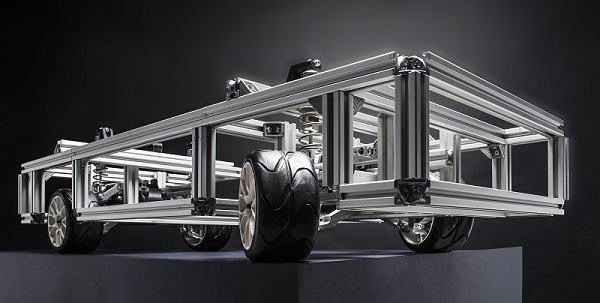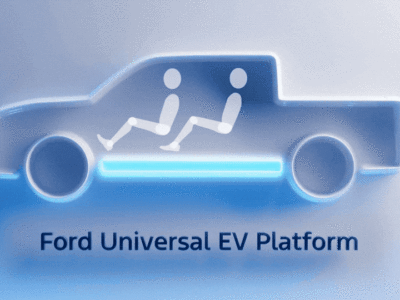Scientists at the Karlsruhe Institute for Technology (KIT) are developing a new assisted steering concept for electric vehicles.
In conventional vehicles, the internal combustion engine not only accelerates the car but also supplies on-board assist systems with energy; such as the assisted steering system, which reduces the strain on the driver at the wheel.
In electric vehicles, this energy comes from the battery and also reduces the range as a result. In this research project by the collaborating partners, Karlsruhe Institute for Technology (KIT) and Schaeffler, the steering system is assisted in an energy-efficient manner by intelligent control of the drive torques transmitted to the individual wheels.
 New drive and steering concepts for electric cars are tested with the scale model demonstrator at KIT. Image Credit: KIT/ M. Breig
New drive and steering concepts for electric cars are tested with the scale model demonstrator at KIT. Image Credit: KIT/ M. Breig
The project is being sponsored by BMBF with a sum of around 0.6 million euros over 3 years and was started in January 2015.
“The new assisted steering system would require less system components in an electric vehicle, this would mean savings in terms of weight and energy in an electric vehicle”, explain project managers Dr. Marcel Mayer, Schaeffler, and Dr. Michael Frey, KIT. “This would mean that an electric car would be cheaper and have a greater range.” Materials and production steps can be saved due to the potential optimization of the design and weight.
The basic idea of the e²-Lenk project is simple:
The wheels in an electric car will be driven individually by electric motors in contrast to a car with an internal combustion engine where all the wheels are provided with equal force.
If the wheels on the left side transmit more drive torque to the road than those on the right side, this will result in acceleration of the vehicle to the right without the need to turn the front wheels or consume additional energy for steering.
Tracked vehicles or quadrocopters steer using the same principle.
“Steering assistance can be provided while driving by means of an intelligent control system and suitable wheel suspension”, says Schaeffler engineer Mayer, Manager of the Automatic Driving Working Group, which is carrying out research as part of the collaborative research project SHARE (Schaeffler Hub for Automotive Research in E-Mobility) at KIT. “Only steering when stationary remains a challenge with conventional designs.”
“The assisted steering system is part of the drive train with our approach”, explains Frey who is researching at KIT’s Institute of Vehicle Systems Technology. Steering the front wheels is carried out without using additional energy. “We also want to significantly increase the quality of driving. Customer benefit, comfort, safety and reliability go hand in hand here.”
Reference(s):
Story: Making the Right Turn | Karlsruhe Institute of Technology — March 30, 2015













Comments